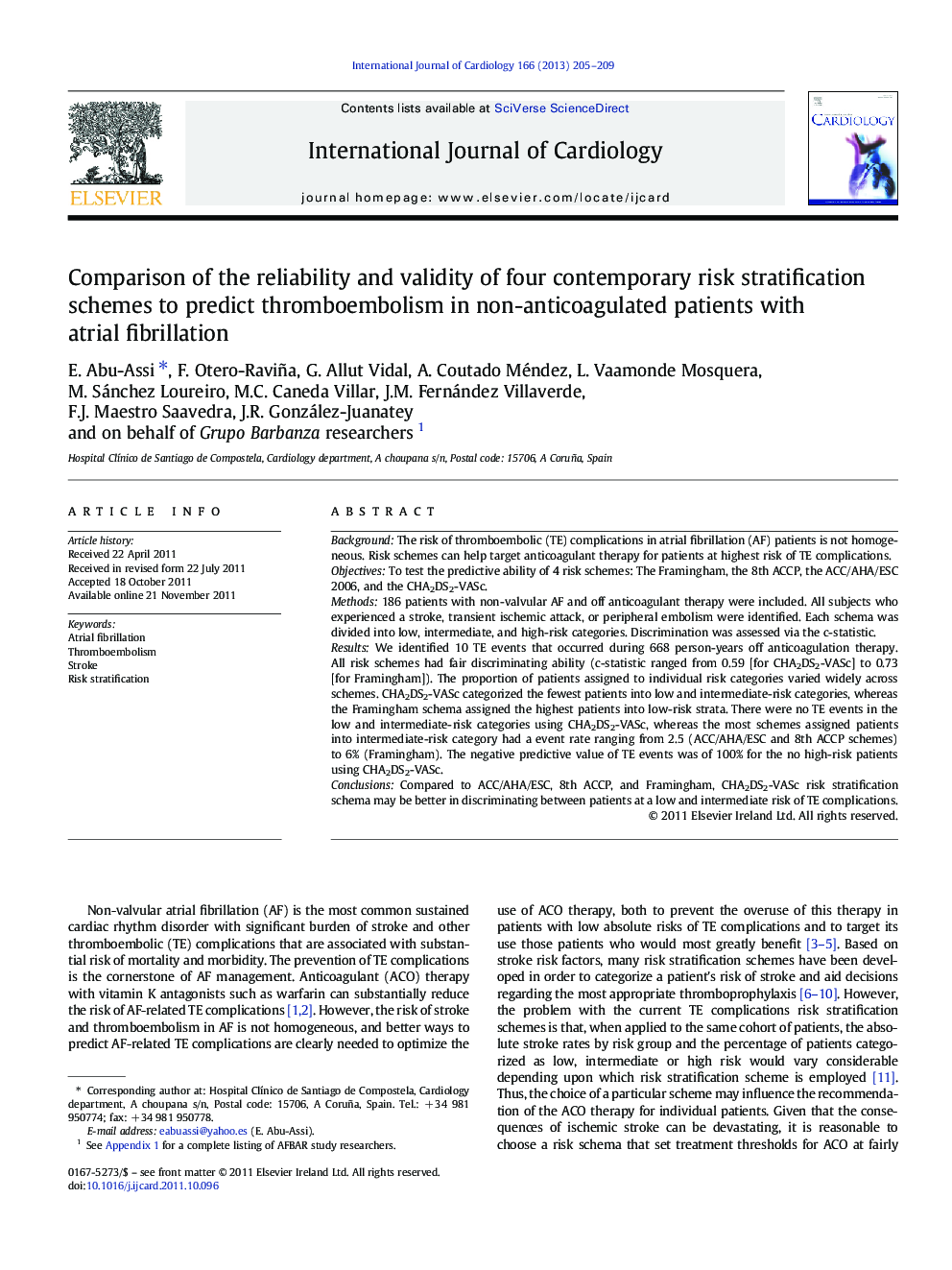| Article ID | Journal | Published Year | Pages | File Type |
|---|---|---|---|---|
| 5977425 | International Journal of Cardiology | 2013 | 5 Pages |
BackgroundThe risk of thromboembolic (TE) complications in atrial fibrillation (AF) patients is not homogeneous. Risk schemes can help target anticoagulant therapy for patients at highest risk of TE complications.ObjectivesTo test the predictive ability of 4 risk schemes: The Framingham, the 8th ACCP, the ACC/AHA/ESC 2006, and the CHA2DS2-VASc.Methods186 patients with non-valvular AF and off anticoagulant therapy were included. All subjects who experienced a stroke, transient ischemic attack, or peripheral embolism were identified. Each schema was divided into low, intermediate, and high-risk categories. Discrimination was assessed via the c-statistic.ResultsWe identified 10 TE events that occurred during 668 person-years off anticoagulation therapy. All risk schemes had fair discriminating ability (c-statistic ranged from 0.59 [for CHA2DS2-VASc] to 0.73 [for Framingham]). The proportion of patients assigned to individual risk categories varied widely across schemes. CHA2DS2-VASc categorized the fewest patients into low and intermediate-risk categories, whereas the Framingham schema assigned the highest patients into low-risk strata. There were no TE events in the low and intermediate-risk categories using CHA2DS2-VASc, whereas the most schemes assigned patients into intermediate-risk category had a event rate ranging from 2.5 (ACC/AHA/ESC and 8th ACCP schemes) to 6% (Framingham). The negative predictive value of TE events was of 100% for the no high-risk patients using CHA2DS2-VASc.ConclusionsCompared to ACC/AHA/ESC, 8th ACCP, and Framingham, CHA2DS2-VASc risk stratification schema may be better in discriminating between patients at a low and intermediate risk of TE complications.
